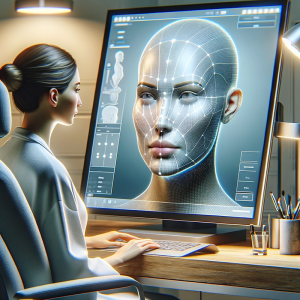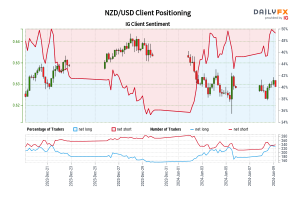Hyperbaric Oxygen Chambers: The Proven Benefits and Possible Risks ist die Überschrift der Nachrichten, die der Autor von NachrichtenStar diesen Artikel gesammelt hat. Bleiben Sie auf NachrichtenStar auf dem Laufenden, um die neuesten Nachrichten zu diesem Thema zu erhalten. Wir bitten Sie, uns in sozialen Netzwerken zu folgen.
Hyperbaric Oxygen Chambers: The Proven Benefits and Possible Risks
Written by: Gerda Endemann, PhD
|
Published on: September 1, 2022

The utility of hyperbaric oxygen therapy (HBOT) has advanced way beyond decompression illness (when scuba divers come to the surface too rapidly). Facilities are springing up around the world, and they’re being used to treat a wide range of complaints, from surgeries that won’t heal to fuzzy brain. You sit or lie in a pressurized chamber breathing in pure oxygen, and the high pressure and high oxygen concentration force extra oxygen into the body. This oxygen helps cells thrive and grow so tissues can repair themselves.
There’s good evidence that HBOT helps heal tissues damaged by cancer radiation treatments, burns, and infections, and it can help reduce the need for foot and leg amputations in diabetics. A doctor will make a referral for these and other FDA-cleared conditions, including severe anemia and sudden vision or hearing loss. HBOT is also cleared by the FDA for the preservation of skin grafts, including those done for gender-affirming surgery. Insurance companies including Medicare will likely pay for all FDA-cleared treatments.
But what about other conditions that people are going to HBOT facilities for, like cognitive support and chronic Lyme disease? And what about the zip-up chambers for home use? Is the expense and time worth it? Medical HBOT is expensive unless your health insurance covers it, to say nothing of being stuck in a claustrophobia-inducing chamber for hours every day with your ears feeling the pressure and without your cell phone for distraction. (Electronics are included in a long list of things that cannot be brought inside the chambers.)
Hyperbaric Chambers: What It’s Like Inside
The treatment experience varies among facilities. The John Muir Medical Center in Walnut Creek, California, is an accredited facility that offers private chambers made of clear plastic so you can watch TV. You lie down on a gurney and slide in and oxygen is pumped in at a high pressure. Other accredited facilities, including Legacy Emanuel Medical Center in Portland and UCLA Hyperbaric Medicine, have multioccupancy chambers that you can stand up and move around in. You can read a book. They are pressurized with air, and 100 percent oxygen is delivered through tight-fitting masks or hoods. I spoke with Enoch Huang, MD, medical director of the hyperbaric medicine and wound care clinic at Legacy Emanuel, about these options. “Some people find the single-person chamber more claustrophobic because you are physically in a smaller space,” Huang says. “But other people find it less claustrophobic because you don’t have anything so close to your face.”
In a medical HBOT chamber, the pressure is two to three times atmospheric pressure at sea level. To put this in perspective, two atmospheres of pressure is what you’d experience 33 feet deep in the ocean, and you’d have to go down 66 feet to see what three atmospheres feels like. Possible side effects include ear and sinus pain, a ruptured eardrum, and temporary vision changes. Huang told me that you’re getting about 10 times more oxygen than usual when breathing in pure oxygen at two atmospheres of pressure.
Compare this to the zip-up bags you can buy for personal use that pressurize to only 1.3 times atmospheric pressure with regular air. According to Huang, these were intended for the treatment of altitude sickness, not for the many conditions people are using them for now. “Some people will take a bottle of oxygen into this soft chamber and breathe pure oxygen from the bottle, which is not safe,” Huang says. “Oxygen is highly flammable, and people can be badly burned as a result of using it in an unsafe manner.” Huang notes that there are proponents of this kind of chamber to treat autism, Lyme disease, multiple sclerosis, and cerebral palsy, but that it is controversial because of the lack of proven results. Some patients decide to take things further and build their own hyperbaric chambers, which is obviously risky. He added, “I got a call about a person in Texas who built his own hyperbaric chamber. It exploded and he had two collapsed lungs.”
Gaining Access to Hyperbaric Chambers
People are building their own chambers and going to facilities not associated with hospitals because without one of the FDA- or Medicare-cleared conditions, those are the only ways they are able to access HBOT.
I thought I’d call a few facilities around the San Francisco Bay Area to see what they said about benefits for the more controversial indications. I wondered how their treatment plans would compare to research-based regimens for approved indications. Based on clinical research, treatment in an accredited facility typically entails 90 to 120 minutes daily, five days a week, for six weeks.
The facilities I spoke with confirmed that a doctor’s prescription was required. If I didn’t have a prescription, I could see their physician on staff ($250 to $450), who would determine a treatment plan for my various aches and pains. I might start off with a general wellness regimen of 90 minutes ($220 to $375 per session) at least twice a week, for a total of 40 sessions. It’s not surprising that facilities offer plans that don’t require daily attendance, even though it’s daily treatments that have been studied clinically.
Off-Label Uses of HBOT
To find out more about off-label uses of HBOT, I looked into ongoing and published research and talked to practitioners. Spoiler alert: If it weren’t so expensive and time-consuming, based on this research I would want to try hyperbaric myself, and I’d also encourage several friends with various issues to do so.
According to Ronald Gordon, MD, the CEO and founder of 8th Element Hyperbaric Medicine, people are anecdotally reporting benefits from HBOT for certain off-label uses that are not yet supported by research. Based on the mechanisms by which HBOT works, he is not surprised by this. “If swelling is a big part of what’s going on, or there are muscle, ligament, or tendon strains or tears, then the answer is absolutely, hyperbaric would help,” Gordon says. “Most, if not all, professional athletic teams have their own hyperbaric chambers.” Gordon explains that the reason HBOT is not used all the time for this sort of injury is that it’s extraordinarily expensive.
The brain is a major target for off-label use of HBOT. Medical researchers are seriously considering HBOT for indications including long COVID, concussions, and impaired cognition, and right now in the US, 20 clinical trials are recruiting subjects. Already clinical studies have been published showing the benefits of HBOT for recovery from strokes and brain injuries, even years after the injury. In veterans with treatment-resistant PTSD, HBOT has led to improvements not only in symptoms but also in brain structure and functioning.
How HBOT helps heal the brain is not a mystery. Using brain imaging, scientists have shown that HBOT leads to an increase in cerebral blood flow and more activity in brain areas that were dormant. Kate Daly, MD, medical director at the All Points North TMS and HBOT centers, told me that when they’ve used hyperbaric oxygen for concussion and postconcussive syndrome patients—many of whom also have PTSD and depression—some patients report unexpected benefits. “People often say that their sleep is significantly improved, and many also notice an improvement in their mood and anxiety,” Daly says.
Alzheimer’s and some causes of impaired cognition are associated with reduced blood flow to the brain. The resulting low oxygen levels in the brain could be contributing to impairment—providing a rationale for HBOT. There is a little research suggesting that HBOT may support healthy cognition. In one study on people with Alzheimer’s disease, 40 minutes of HBOT for 20 days led to significant improvements in cognition lasting at least a month, improvements that were not seen in untreated control patients. And cognitive benefits have been shown in healthy adults. In one trial, three months of HBOT for healthy people over age 64 resulted in improved scores for several measures of cognition, including information processing. As is the case for most HBOT, treatment was intensive. People received 60 treatments at two atmospheres for 90 minutes, five days a week.
We don’t yet know if less-intensive treatment regimens will be helpful, or if the benefits will outweigh the risks under real-life conditions in the long term. There could be oxygen toxicity with continued treatment for chronic conditions, so longer and larger studies are needed before reaching conclusions. According to Huang, one reason the huge studies required by the FDA have not yet been done is that pharmaceutical companies can’t make money from oxygen, so they have not invested in the necessary research.
There doesn’t appear to be published evidence supporting the use of HBOT to treat cancer, Lyme disease, or autism spectrum disorder. I found minimal evidence in support of its use for fibromyalgia or arthritis—only one clinical study each.
What I did find is that HBOT is underutilized for one indication that has been accepted by the FDA, the Undersea and Hyperbaric Medical Society, and Medicare: keeping skin and tissue grafts alive. HBOT can be used to support healing of tissue grafts used in gender-affirming surgery.
HBOT in Gender-Affirming Surgery
Just south of San Francisco, 8th Element Hyperbaric Medicine is dedicated to supporting healthy skin and tissue grafts used in gender-affirming surgery. These surgeries frequently fail when grafts die because of low blood flow or infection. From previous experience as founder of Mobile Hyperbaric Centers in Cleveland, Gordon knew that HBOT was crucial for keeping grafts alive. Skin grafts at risk of tissue death have long been cleared for treatment with HBOT by the FDA and covered by insurance. “As a practitioner, I was stunned that surgeons doing gender surgery weren’t using hyperbaric, that they were accepting the level of complications that they had,” Gordon says. He founded 8th Element to fill this gap. “Out of a couple hundred people who got five treatments or more, we haven’t had anybody who didn’t recover. We’ll be publishing those data.”
Choosing an HBOT Facility
If you decide to try hyperbaric oxygen therapy, here’s what Huang told me to look for. At a minimum, a doctor will have completed a 40-hour course in hyperbaric medicine. The gold standard is board certification in hyperbaric medicine.
As far as facilities, the FDA would like you to use one that’s accredited by the Undersea and Hyperbaric Medical Society. This offers assurance that the chambers are built according to code, the facility has the appropriate protocols in place, and the physicians are properly trained.
Remember the Grey’s Anatomy episode where a patient lit a cigarette and his oxygen line exploded? Pure oxygen is dangerous. There have been deadly fires and explosions in unaccredited facilities. And oxygen oxidizes. Given all the research on the harmful effects of oxidation and the benefits of antioxidants, you’d think we’d want to use pure oxygen only when quite certain of the long-term risk-to-benefit ratio.
Contraindications to Hyperbaric Oxygen
Jonathan Rotella, president and CEO of NexGen Hyperbaric, told me that most people are able to tolerate the pressure. If they can’t, it’s typically because the patient has a head cold. Other reasons people may not be able to equalize ear pressure are ear surgeries and infections.
Additional contraindications include claustrophobia, pneumothorax, and use of medications such as disulfiram, doxorubicin, and bleomycin. Possible contraindications may include chronic obstructive pulmonary disease, epidural pain pumps, and eye surgeries. In addition, high fever or epilepsy may make oxygen toxicity more likely.
The Cost of HBOT
Whether or not HBOT is covered by insurance is highly variable. A prescription for treatment for one of the FDA-cleared conditions at a hospital facility is likely to be covered. Treatment at a wellness center for an off-label condition is less of a sure thing. At NexGen Hyperbaric, which uses HBOT for a wide variety of conditions, both on- and off-label, Rotella says they’ve been successful in getting commercial insurance to pay for concussions and depression. The physician who prescribes the treatment usually has to talk to the physicians working for the insurance companies, telling them why they believe this therapy will help the patient and citing medical journals and other sources. “We have been successful, but that’s not always the case,” Rotella says. “In some cases, patients have to pay cash.”
Related Reading on goop
There are multiple approaches to help get oxygen to the tissues that need it. Supporting good circulation of blood is key. In the body, oxygen is carried by hemoglobin, which requires iron in order to function. Many women show symptoms of low iron and can benefit from a supplement. And an intensive wellness retreat will offer a variety of circulation-boosting practices, along with plenty of indulgence.
This article is for informational purposes only. It is not, nor is it intended to be, a substitute for professional medical advice, diagnosis, or treatment and should never be relied upon for specific medical advice. To the extent that this article features the advice of physicians or medical practitioners, the views expressed are the views of the cited expert and do not necessarily represent the views of goop.










